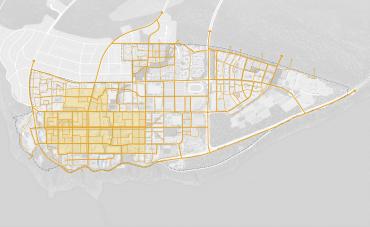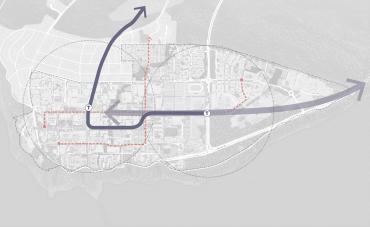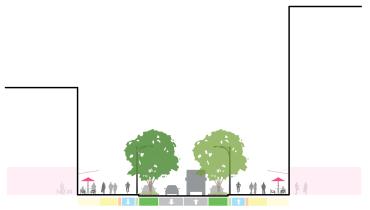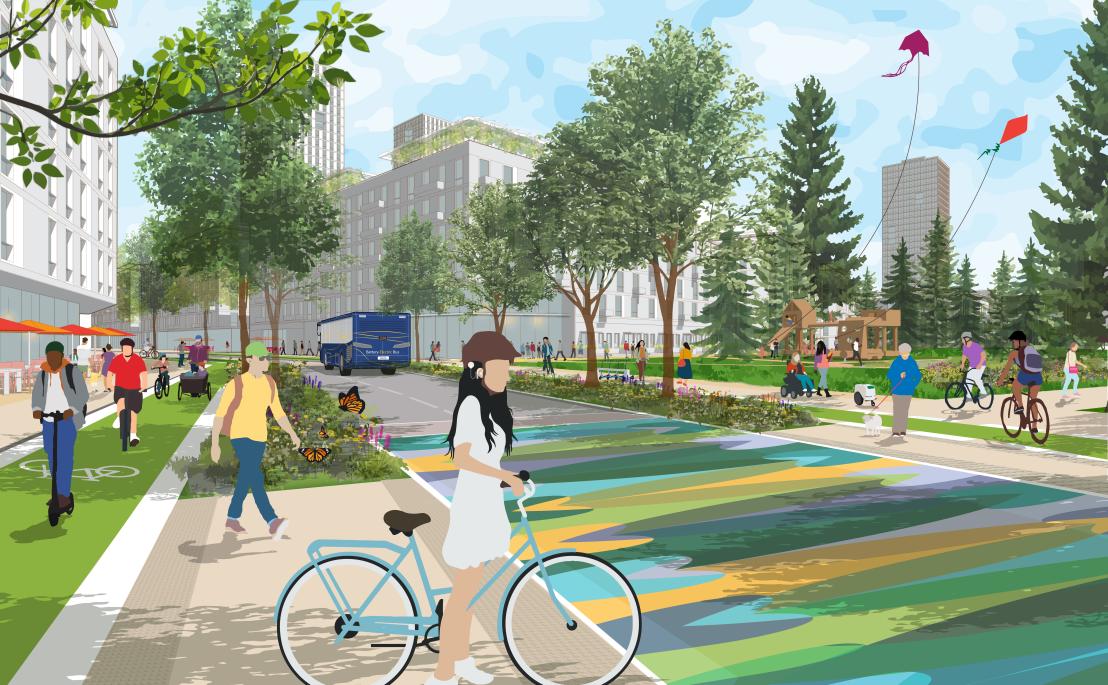
UBC Vancouver in 2050
Two on-campus SkyTrain stations transform the way people get to, from and around campus, better connecting it to the rest of the region. Members of the UBC community who live off campus have shorter, greener, less complicated commutes, giving them more time to study, work, play and rest. On-campus residents benefit from faster and easier transit access to other parts of the region and can easily meet their daily needs without owning a car. With more people arriving by transit, a renewed and expanded on-campus mobility network that prioritizes active and sustainable modes means people of all ages and abilities can get to where they need to go, comfortably and safely, while reducing greenhouse gas emissions.
Key Strategies
|

Prioritizing Sustainable Modes of Transportation
The Vision prioritizes more active and sustainable modes over less sustainable modes (single occupancy vehicles, ride-hailing, taxi, etc.), while ensuring the safety and comfort of more vulnerable road users, such as people walking, rolling, biking or using another form of micromobility.
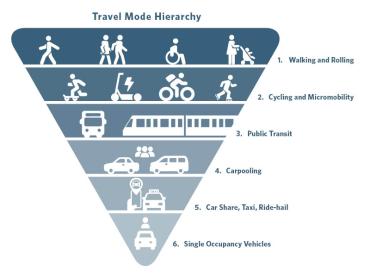
2050 Active Transportation Network Concept

Walking, rolling and cycling will continue to be the dominant modes of travel for trips around campus in 2050. Cycling and other forms of active transport will become increasingly attractive for trips to and from campus as off-campus infrastructure improves and adoption of e-bikes and other forms of electric micromobility expands.
On-campus corridors that form part of or provide key links to the Regional Cycling Network will be the focus of investment in cycling facilities for all ages and abilities. A fine-grained, fully accessible and well-lit network of pedestrian pathways will be provided across the campus, punctuated by places and amenities that offer opportunities for respite, weather protection and publicly accessible washroom facilities.
2050 Transit Network Concept

Significant regional investments in transit are expected over the next decades that will dramatically transform UBC. These include:
- the much-anticipated extension of the Millennium Line SkyTrain by the early 2030s;
- electrification of bus services;
- changes to roadways to and from campus to improve transit priority and introduce protected cycling facilities; and
- eventually, a new rapid transit line connecting the campus to Metrotown via Southwest Marine Drive, 41st and 49th Avenues.
Anticipated behavioral and technological changes include the expanded availability and adoption of shared, electric and autonomous modes of transport, as well as tools to make it easier to plan and pay for multi-modal trips.
2050 Functional Street Categories
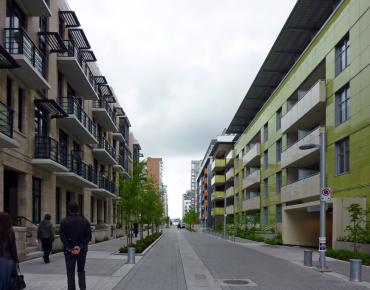
The Vision identifies a network of Complete Streets where all modes of travel are accommodated, Limited Traffic Streets, where only certain motor vehicles are accommodated, and Zero Traffic Streets, where only emergency vehicles are permitted (and transit vehicles on select segments).
Cars will continue to play a role for trips to, from and around campus, and vehicle access is particularly critical for emergency services, people with mobility challenges, service and delivery vehicles, and ride-hailing and taxi services. The network will be designed to improve safety and minimize congestion, while supporting a transition to fewer car trips.
